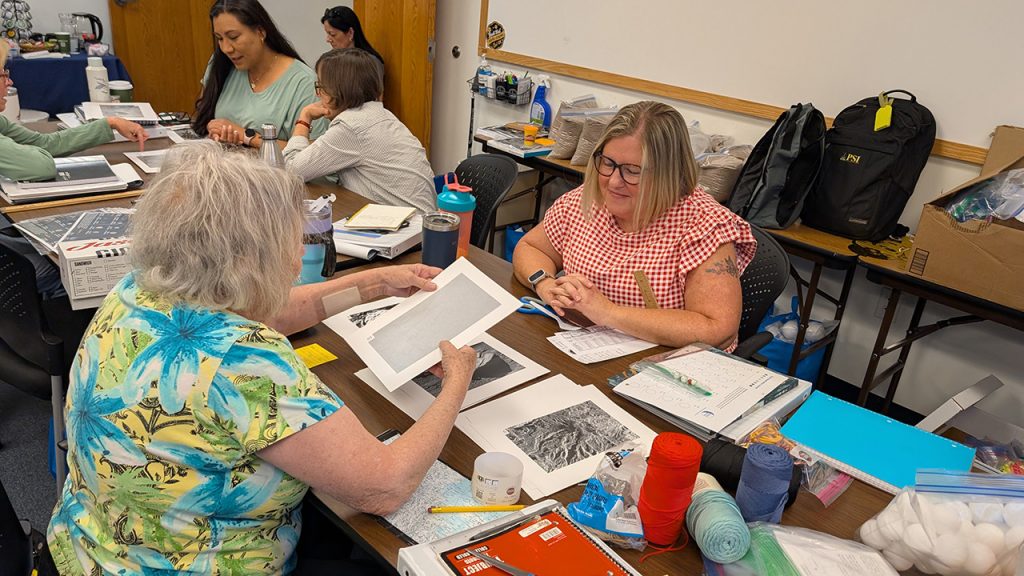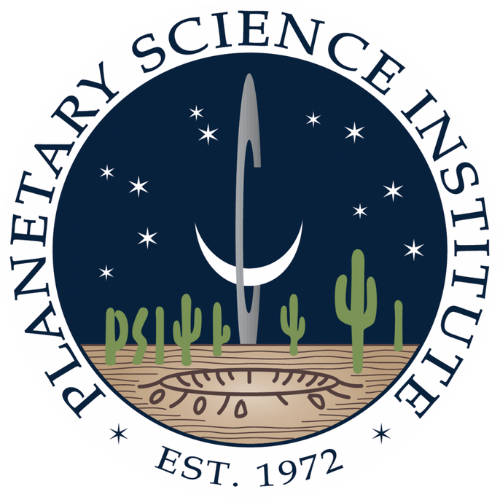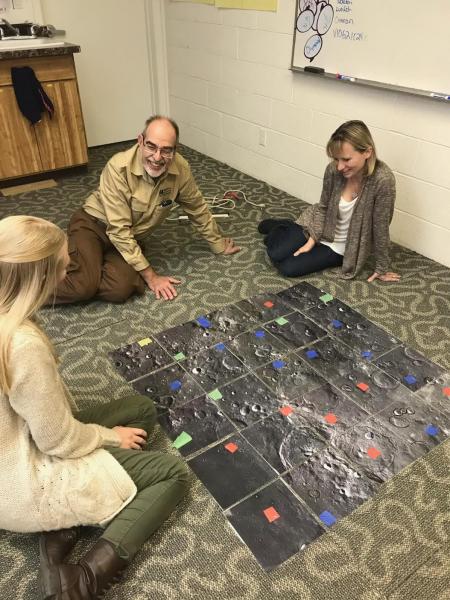Nine southern Arizona elementary school teachers gathered at the Planetary Science Institute in Tucson for a three-day professional development workshop organized in partnership with STEMAZing at the Pima County School Superintendent’s Office.
After introductions, the teachers were asked to think about what they already know about the Moon and what they hoped to learn from the workshop.
What they knew was this: “A full Moon really does make kids wild.” And, “We always see the same side of the Moon.” On the other hand, their questions hinted at the mystery that many people still feel when they think about other worlds: “Is there weather on the Moon? Does it have different climates like here on Earth?”
They also eagerly asked how to bring the Moon into their classrooms in the most effective way.
“During the workshop, teachers learned about the Moon as well as basic planetary science, including how we classify objects in the Solar System and how surfaces change. They engaged in hands-on activities that they can do in their classroom, such as crater making, Moon poetry, an engineering design challenge to safely land lunar astronauts (ping pong balls), lunar art activities, modeling Moon phases and comparing planetary surfaces,” said workshop organizer Sanlyn Buxner, a PSI senior education and communication specialist and senior scientist. “The workshop was thematically organized around The Moon, a book that I co-wrote with Pamela Gay and George Kramer with contributions from Larry Lebofsky.”
Workshop co-organizers included Labofsky, a PSI senior education and communication specialist, and Amanda McPherson, Pima County’s STEMAZING project director. Each teacher went home with a kit to do all activities covered in the workshop thanks to support from Tucson Electric Power and PSI.
At the end, teachers shared how much they had learned about the Moon, including why there are Moon phases, how craters are formed, and how to engage their students in activities related to the Moon.


